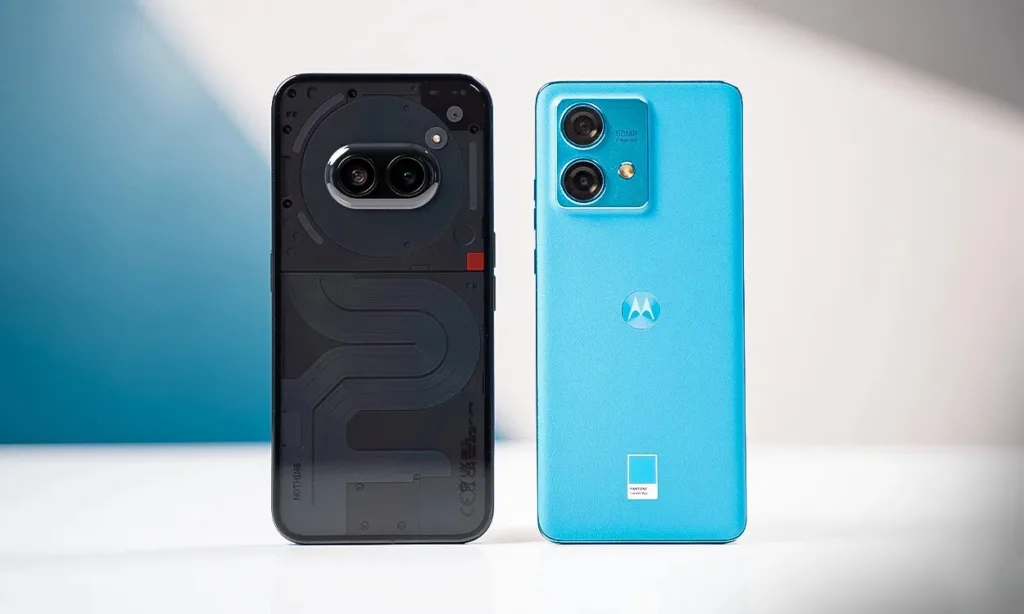
The Nothing Phone 2a has finally been released, bringing several upgrades over its predecessor, the Phone 1, which launched almost two years ago. One feature it retains is the glyph lights and the brand’s proprietary Nothing OS, providing a clean stock Android experience to users. This puts the Nothing Phone 2a (review) directly against competitors like the Moto Edge 40 Neo, which also offers a stock Android experience and falls in the same price range.
I had the opportunity to test both devices here at the AzMo Tech office and wanted to see how Nothing’s latest offering compares to one of Motorola’s top models. So, if you’re looking for a stock Android smartphone under Rs. 25,000, which one should you choose? Let’s find out.
Nothing Phone 2a vs Moto Edge 40 Neo: Specifications

Nothing Phone 2a vs Moto Edge 40 Neo: Software
Let’s cut to the chase and dive straight into what you’re here for: which of these two smartphones offers the best stock Android experience?
To begin with, both the Nothing Phone 2a and Moto Edge 40 Neo come without any pre-installed bloatware, which is a definite advantage in this segment. However, Nothing takes the lead over Moto’s MyUX skin in three key areas.
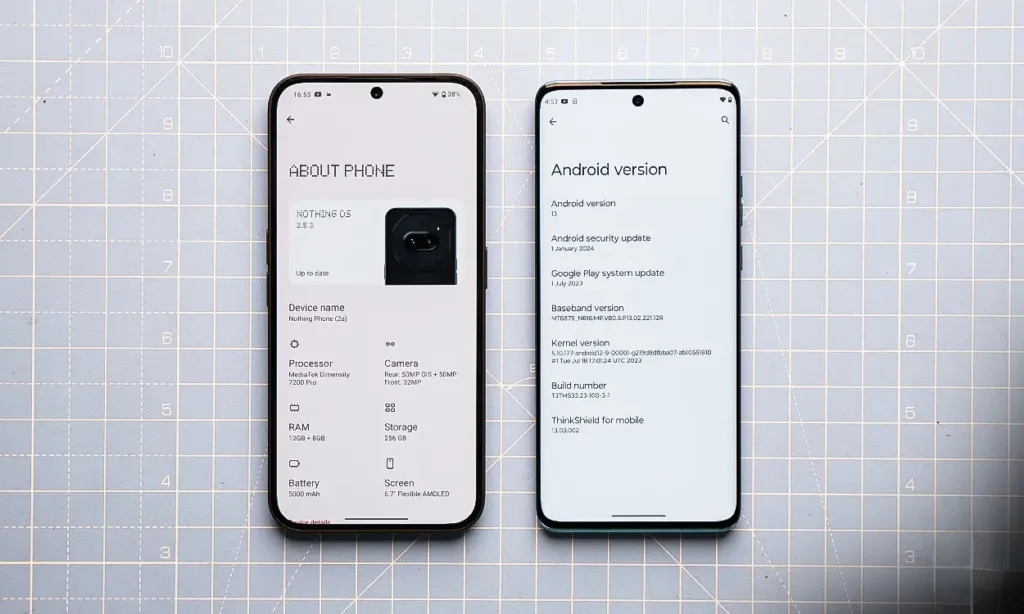
Firstly, the optimization of the Android 14-based Nothing OS 2.5 on the Phone 2a is exceptional. Animations feel incredibly smooth (just wait until you experience the Always-On Display transition on the lock screen), whether you’re switching between apps or using split-screen mode.
Secondly, there’s the significant advantage of software updates. Motorola is notorious for its inconsistent track record of providing major OS updates, let alone delivering them in a timely manner.
On the other hand, while Nothing may be a newcomer to the market, they have already established an impressive track record of delivering timely updates. Moreover, as a new brand, they have much to prove, so you can trust that your Nothing Phone 2a will receive the promised updates.
For instance, even the Nothing Phone 1 has already received the Android 14 update. In contrast, despite being available for months, the Moto Edge 40 Neo has yet to receive it. Motorola has also not provided a specific timeline for the rollout.
Additionally, the Moto Edge 40 Neo offers only 2 years of OS updates and 3 years of security updates, whereas the Nothing Phone 2a will receive 3 years of OS updates and 4 years of security updates.
Thirdly, while the Moto Edge 40 Neo doesn’t come with significant bloatware, it does feature a widget on the home screen that shows ads. You can remove this widget, but it’s worth noting. The phone also comes with preloaded apps like Facebook and LinkedIn, which can be uninstalled. In comparison, the Nothing Phone 2a doesn’t come with any such preloaded apps.

Another point to consider is the haptic feedback of the two phones. For many users, including myself, haptic feedback is crucial for a good user experience. The Moto Edge 40 Neo’s haptic feedback can feel slightly harsh and inconsistent when interacting with different elements in the UI.
For instance, I noticed a continuous, intense vibration when scrolling through apps in the recent apps section, which was quite annoying. In contrast, the Nothing Phone 2a doesn’t overwhelm you with vibrations or unnecessary haptic feedback. It provides just the right amount of haptic feedback, finely tuned to the OS, which enhances the overall user experience.
Overall, these factors combined made using the Nothing OS on the Phone 2a an absolute delight, resulting in a superior software experience.
Nothing Phone 2a vs Moto Edge 40 Neo: Box Contents
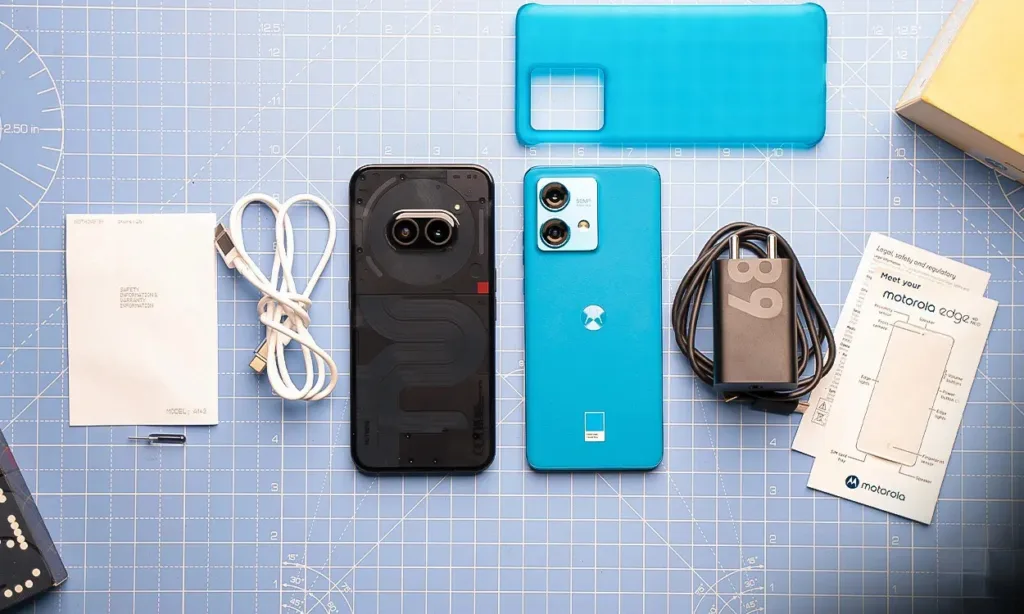
Now that we’ve covered the most crucial aspect of this comparison, let’s move on to what you get in the retail box. Frankly, the Nothing Phone 2a doesn’t offer much in this department.
In addition to the phone itself, a SIM ejector tool, and a Type-C to Type-C cable, the unboxing experience is rather lackluster. Unfortunately, there’s no charger or case included, which is disappointing.
On the flip side, Motorola has gone the extra mile to provide as much value as possible for your money. From the charger and Type-C cable to a high-quality case and even the SIM ejector tool, everything you need for your device is included. So, there’s no need to go searching for additional accessories. The Moto Edge 40 Neo easily takes the win in this category.
Nothing Phone 2a vs Moto Edge 40 Neo: Design
Let’s discuss the design for a moment. I have the Black variant of the Nothing Phone 2a and the Caneel Bay (Blue) variant of the Moto Edge 40 Neo here at the AzMo Tech office. It’s worth noting that the back panel of the Edge 40 Neo is made of vegan leather.
Upon picking up the two phones, I immediately appreciate the in-hand feel of the Edge 40 Neo. It’s much more grippy and feels significantly more premium compared to the Nothing Phone 2a’s polycarbonate (industry term for plastic) back. This also means that you can comfortably use the Edge 40 Neo without a case, while the Phone 2a may require a case for better grip.

When you flip the phones and look at the rear panel, the Nothing Phone 2a stands out in terms of design. The transparent back, a trademark of Nothing, is always a visual treat. Additionally, the Glyph lights further enhance the phone’s design statement, although they may not be used frequently. Personally, I often find myself turning off the Glyph lights more often than not.
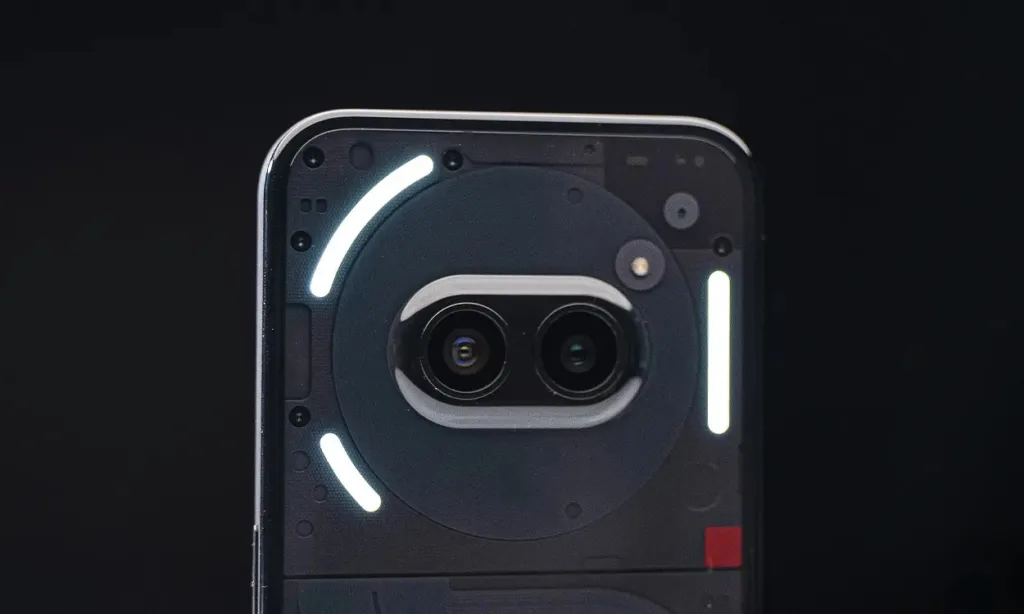
Both devices have a plastic frame, but the Nothing Phone 2a stands out with its matte finish, which gives it a slightly better feel in hand. I also prefer the button placement on the Phone 2a. The power button is on the right side, with the volume rockers on the left, while the Moto Edge 40 Neo has all the buttons crammed on the right side of the frame.
The port placements are similar for both phones, with the SIM card slot, speaker grille, microphone, and Type-C port located at the bottom. Additionally, the receiver for both devices acts as the second speaker, and there’s another microphone at the top of the frame.
The buttons on the Nothing Phone 2a, made of aluminum, feel solid to operate. In contrast, the Moto Edge 40 Neo’s buttons feel a bit wobbly. However, it’s important to note that the Edge 40 Neo boasts an IP68 rating for dust and water resistance, while the Phone 2a has a lower IP54 rating, making it less resistant to dust and water.
The camera module placement on the Phone 2a is well thought out, as the phone lays flat on a desk without wobbling. However, the Motorola Edge 40 Neo suffers from wobbling due to the top-left placement of its camera module.
The Edge 40 Neo’s sleek body, weighing 170 grams, is easier to hold and carry than the Nothing Phone 2a, which weighs 190 grams and has a boxier design. While the Edge 40 Neo offers a premium in-hand feel, the Phone 2a’s practical design may appeal to some users more. Ultimately, the choice between the two comes down to personal preference, whether you prefer the premium feel of the Edge 40 Neo or the unique transparent glyph-laden look of the Phone 2a.
Nothing Phone 2a vs Moto Edge 40 Neo: Display

When considering the display, the first thing that caught my attention was the bezels. The Nothing Phone 2a’s uniform bezels on the flexible AMOLED 6.7-inch FHD+ display looked sleek. On the other hand, the Moto Edge 40 Neo’s curved 6.55-inch FHD+ pOLED display also exudes a premium look and feel, making it easier to hold and navigate with one hand.
During my testing, I found the color reproduction of the Moto Edge 40 Neo to be superior. There’s a noticeable difference, likely due to the Edge 40 Neo’s display supporting the DCI-P3 color gamut. The Nothing Phone 2a, however, leads in terms of brightness levels.

While Nothing claims a peak brightness of 1300 nits, our Lux Meter recorded a reading of 1750 nits in some scenarios, providing more comfort when viewing the screen outdoors.
Additionally, the Moto Edge 40 Neo features a faster 144Hz refresh rate, with options to specifically engage 120Hz, 60Hz, or set it to auto. On the contrary, the Nothing Phone 2a lacks a 90Hz refresh rate option and only offers the choice between 120Hz, 60Hz, or auto.
However, the Nothing Phone 2a boasts better Gorilla Glass 5 protection, whereas the Edge 40 Neo offers NEG protection. The Phone 2a’s glass AMOLED screen requires this level of protection, while the Edge 40 Neo’s plastic OLED may be more prone to scratches but less likely to shatter during accidental drops.
Nothing Phone 2a vs Moto Edge 40 Neo: Cameras
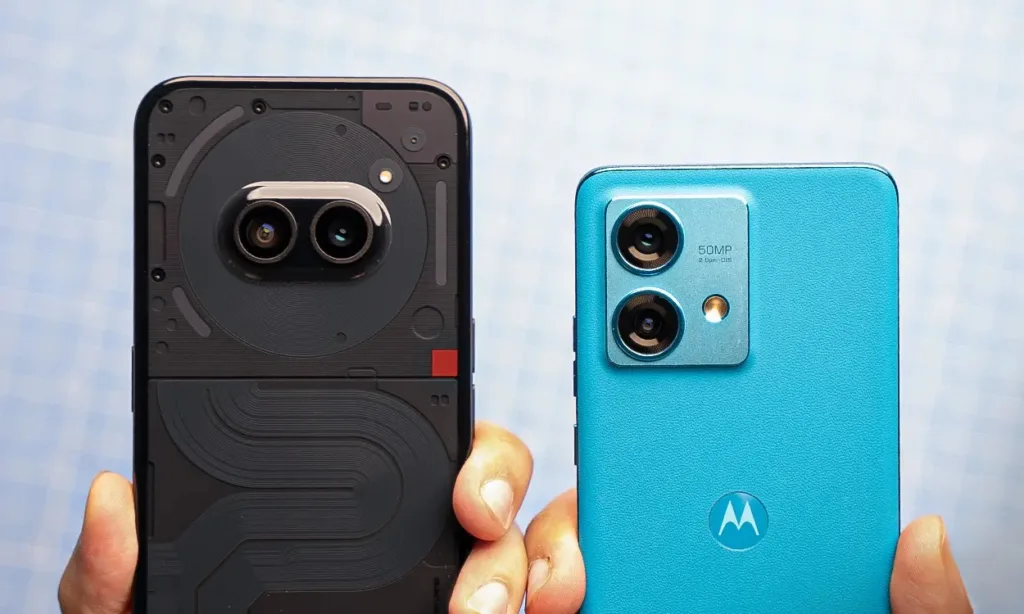
Both phones feature dual rear camera setups. The Nothing Phone 2a includes a primary 50 MP Samsung ISOCELL GN9 sensor with OIS and a secondary 50 MP Samsung ISOCELL JN1 ultra-wide sensor. For selfies, it sports a 32 MP Sony IMX 615 sensor.
On the other hand, the Moto Edge 40 Neo boasts a primary 50 MP OmniVision OV50A sensor with OIS and a secondary 13 MP SK Hynix HI1336 ultra-wide sensor. For selfies, it features a 32 MP OmniVision OV32B sensor. Let’s compare the camera performance of these two devices:
Daylight
The Nothing Phone 2a captures images with a more natural look, effectively managing shadows and highlights. When zoomed in, the Phone 2a retains details much better than the Moto Edge 40 Neo.
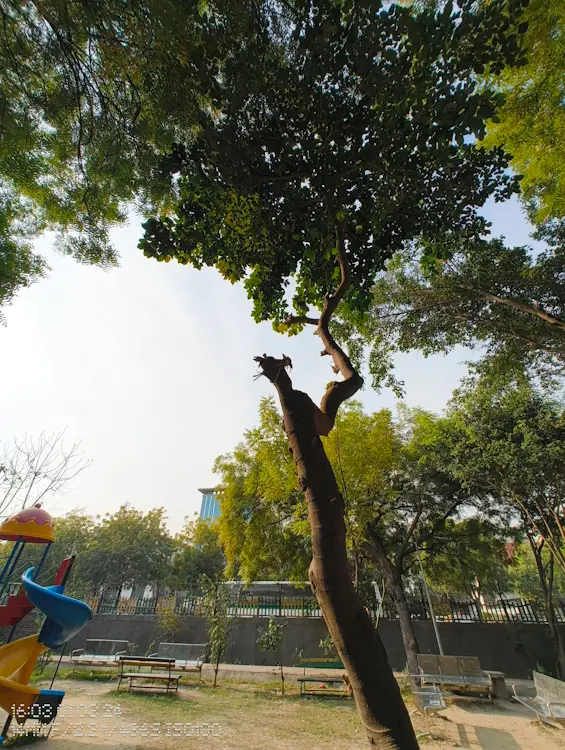

On the other hand, the Edge 40 Neo’s images lack sharpness and detail, and its white balance tuning can be unstable. The colors in its pictures often appear slightly unnatural and flat compared to the Phone 2a. This difference is evident in the shadows and highlights:

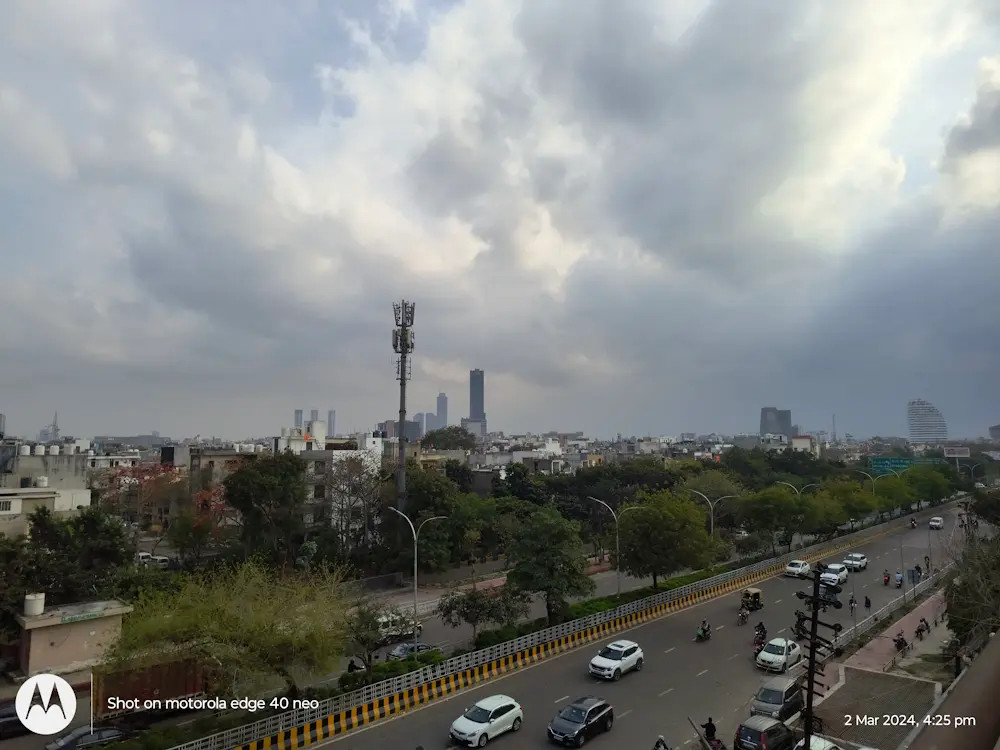
Even in photos of people, the Phone 2a produces more realistic skin tones and better detail. The Phone 2a also maintains better lighting, while the Edge 40 Neo tends to darken the image.
Night-time
At night, I observed the same issue. In the samples I captured, the Moto Edge 40 Neo has slightly subdued the orange lighting on the exteriors of the house. When zoomed in, details are also lacking. On the contrary, the Nothing Phone 2a has retained the details and natural colors of not just the lighting but everything around.


However, I did notice a bit of lens flare in the shots from the Nothing Phone 2a. Additionally, it tends to slightly blow out the highlights in some instances.
Front Camera
When using the front camera, the Nothing Phone 2a maintains natural skin tones with good details across the shots, while the Moto Edge 40 Neo tends to over-sharpen the images. However, the colors are still good on the Edge 40 Neo’s front camera. Additionally, in portrait mode, both phones exhibit great edge detection.
Videos
When it comes to video recording, both the Nothing Phone 2a and Moto Edge 40 Neo can record up to 4K at 30 FPS using the rear camera. However, the Edge 40 Neo can also do so using its selfie shooter, while the Nothing Phone 2a is limited to 1080p at 60 FPS.
On the other hand, the Edge 40 Neo cannot capture at 1080p at 60 FPS using its front sensor. Both phones, however, can capture 1080p videos at 60 FPS using the rear sensor.
Overall, I found the rear camera’s video recording capabilities of both phones to be good. The Nothing Phone 2a produces slightly more natural-looking videos while handling light better. However, stabilization is equally good on both devices.
When recording videos using the front cameras of both phones, I noticed that the microphone quality was better on the Phone 2a.
Nothing Phone 2a vs Moto Edge 40 Neo: Performance
When it comes to performance, the Nothing Phone 2a is powered by the brand’s custom Dimensity 7200 Pro, while the Moto Edge 40 Neo comes with the MediaTek Dimensity 7030. The Dimensity 7200 Pro on the Nothing Phone 2a offers slightly better performance. For detailed information, you can refer to our Dimensity 7200 Pro vs Snapdragon 7s Gen 2 vs Snapdragon 782G benchmark comparison.
The Nothing Phone 2a outperforms its competitors in benchmarks, achieving higher scores.
Benchmarks
In benchmark tests, the Nothing Phone 2a performs better, achieving higher scores across the board:
Day-to-Day Usage
Both devices, being stock Android budget beasts, deliver smooth performance for everyday tasks. App opening times are excellent, RAM management is efficient, multitasking is seamless, and overall fluidity is top-notch for this budget range.
While the slightly more optimized Nothing OS 2.5 ensures a smoother experience, the bloatware-free OS of the Moto Edge 40 Neo is also impressive. This offers a clean Android experience in the price segment.
Gaming
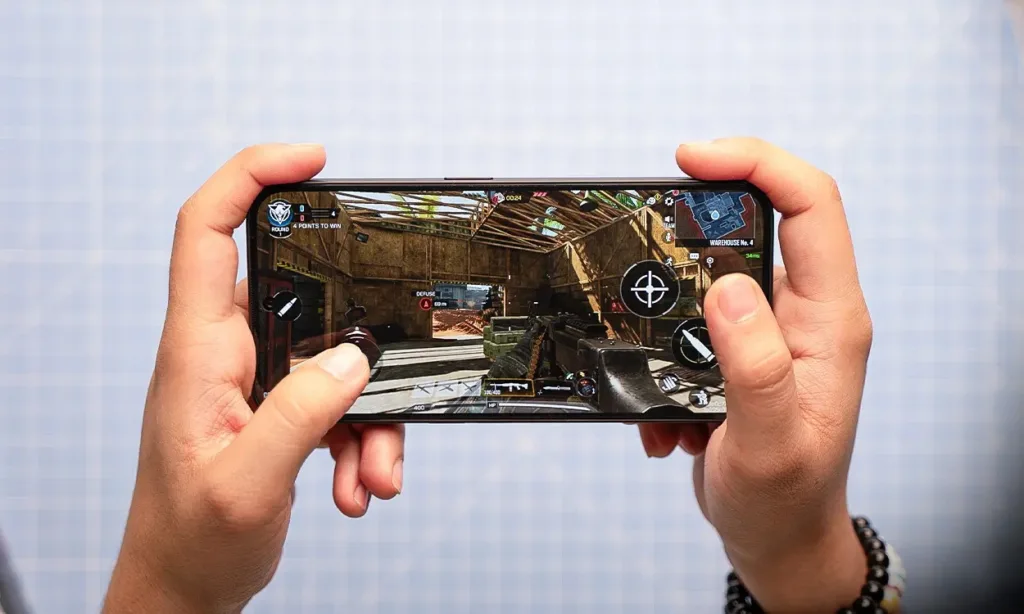
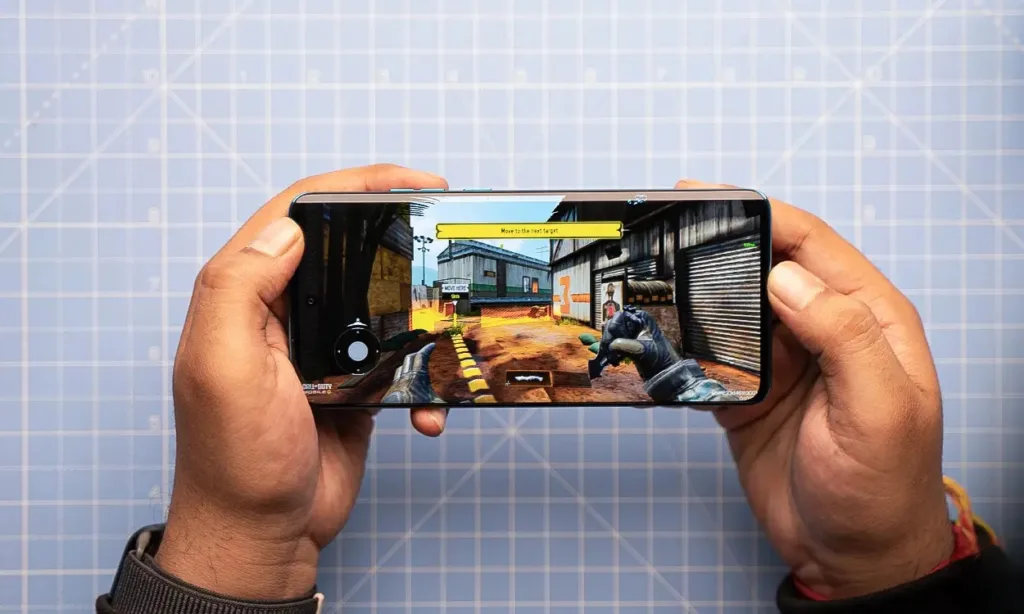
My gaming experience with both phones was impressive. Although the Dimensity 7030 lagged slightly behind in benchmarks, it delivered an impressive gaming performance. I tested Genshin Impact, CoD Mobile, and BGMI on both devices, and they performed equally well in terms of gaming performance.
Here’s a quick look at the maximum possible graphical settings for these games on the two phones:

I also noticed that neither the Nothing Phone 2a nor the Moto Edge 40 Neo got uncomfortably hot during my testing. Using a thermal gun, I found that the Phone 2a hovered in the 38-40 degree range even when running benchmarks or gaming for extended periods.
The Moto Edge 40 Neo can get quite warm, reaching up to 47 degrees when running under full load for some time. However, this didn’t seem to affect the gaming performance of the device, which is a good sign. Overall, both phones offer reliable performance without any major heating issues.
Battery Life and Charging

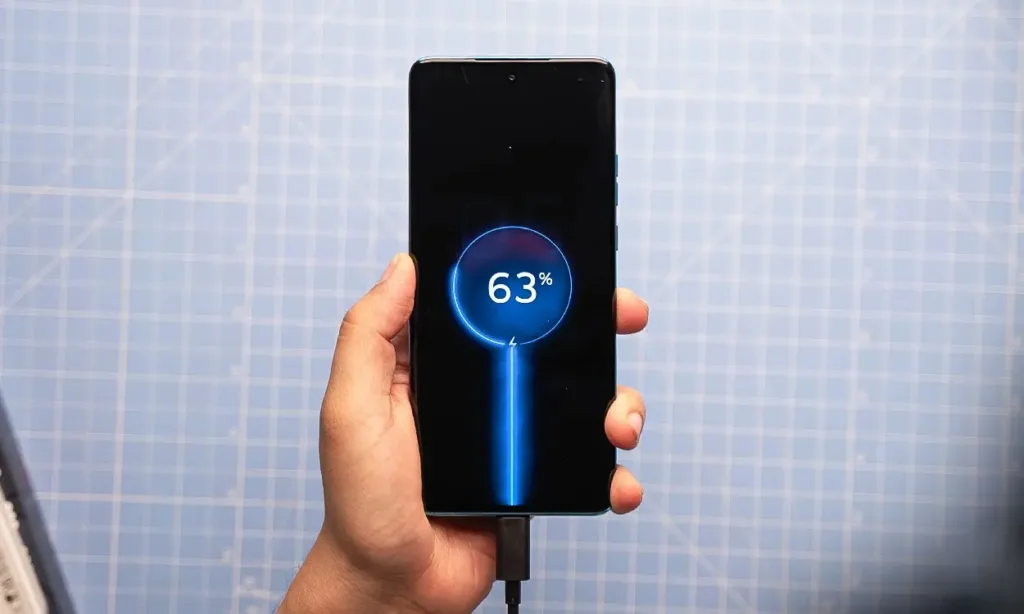
Both of these stock Android phones impressed me with their battery performance. What’s even more impressive is that the super sleek and lightweight Moto Edge 40 Neo houses a large 5,000mAh battery. Similarly, the Nothing Phone 2a is powered by a 5,000mAh battery.
However, in my testing, the Nothing Phone 2a seemed to offer more battery life when subjected to tasks such as watching 1080p HDR videos on YouTube, streaming Netflix content, regular multitasking included an hour of Genshin Impact, about playing 2-3 ranked matches of CoD Mobile, and running some benchmarks.
After conducting various tests, I found that the Nothing Phone 2a delivered a screen-on-time of approximately 7.5 hours, which is more than the 5 hours of backup I got on the Moto Edge 40 Neo.
This difference in battery performance can be attributed to the 4nm TSMC-made Dimensity 7200 Pro on the Phone 2a, compared to the Edge 40 Neo’s Dimensity 7030, which is a 6nm chip. The Phone 2a’s processor is slightly more power efficient as a result.
However, it’s worth noting that charging is faster on the Edge 40 Neo, thanks to its 68W fast charging support. During my testing, I observed the device charging from 25% to 100% in around 30 minutes. The Nothing Phone 2a, on the other hand, supports 45W fast charging and can fully charge from 0 to 100% in about an hour.
Speaker Output
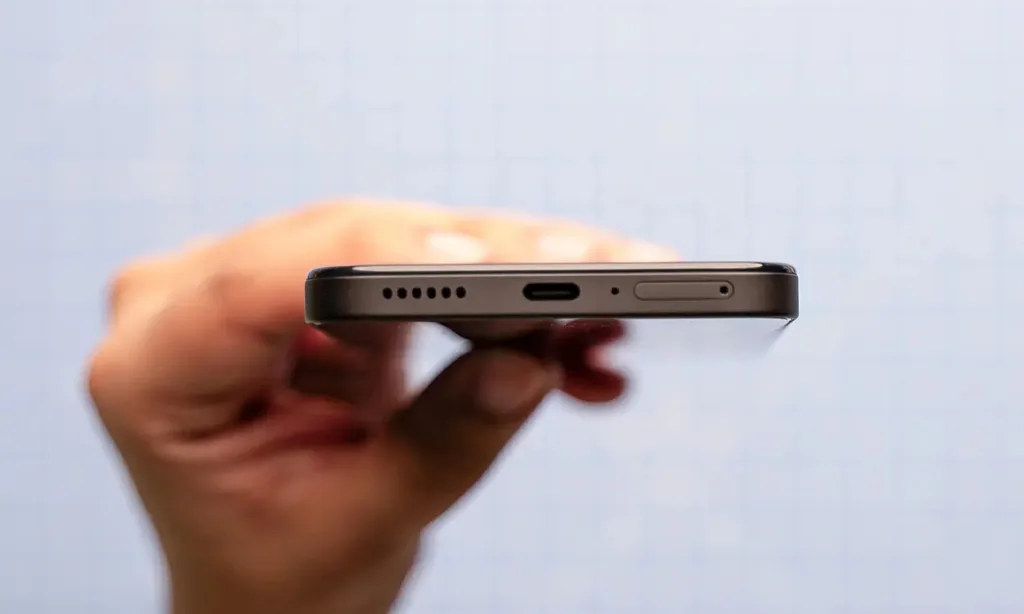

Both phones feature stereo speakers, with one speaker located at the bottom of the frame and the other serving as the receiver at the top. In terms of speaker output, both phones are sufficiently loud. I tested various genres of music, ranging from rock and roll to bass-heavy EDM, on both the Nothing Phone 2a and the Moto Edge 40 Neo.
The Nothing Phone 2a offered a well-balanced audio profile across all genres. The Moto Edge 40 Neo’s speaker felt loud, but somewhat lackluster in comparison. The output was slightly muffled and leaned towards the shrill side. It lacked the richness and depth in audio that I experienced with the Phone 2a.
Nothing Phone 2a vs Moto Edge 40 Neo: Connectivity
In terms of connectivity, both phones are quite similar, with only a few minor differences. The Nothing Phone 2a features Wi-Fi 6, while the Moto Edge 40 Neo boasts Wi-Fi 6E. Both phones come with Bluetooth 5.3.
One notable similarity is that both phones offer NFC support. Additionally, they both provide a good range of 5G bands, with the Nothing Phone 2a offering 13 5G bands and the Moto Edge 40 Neo offering 14. I conducted 5G speed tests on both devices using a Jio SIM, and they delivered similar results, indicating that 5G connectivity should be reliable on either phone.
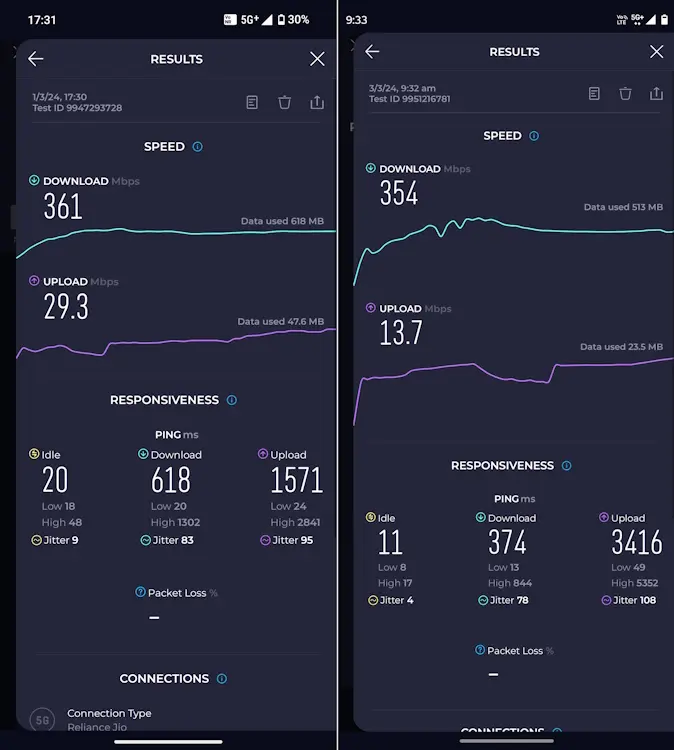
Final Verdict: Which Should You Buy?
After comparing the Nothing Phone 2a and Moto Edge 40 Neo in detail, I can confidently say that both are excellent value-for-money stock Android phones. Regardless of which one you choose, you’re unlikely to be disappointed.
However, the Moto Edge 40 Neo has a slight edge due to its lower price. Priced at Rs. 22,999 for the 8GB+128GB variant, it comes with a charger and accessories included in the box. On the other hand, the Nothing Phone 2a, priced at Rs. 23,999 for Rs. 22,999 for the 8GB+128GB, doesn’t include any extras.
This means you’ll either need to spend an additional Rs. 2,500 for Nothing’s 45W charger or find a cheaper alternative. Additionally, you’ll also need to purchase a case separately for the Nothing Phone 2a.
The Nothing Phone 2a emerges as the superior stock Android phone for several reasons. It offers a superior software experience with the well-optimized Nothing OS 2.5, longer battery life, and a unique design.
While the Moto Edge 40 Neo provides a more premium unboxing experience, featuring a more premium design, superior display color reproduction, and faster charging, according to my testing.
However, the Nothing Phone 2a’s advantage lies in its longer software support, with 3 years of Android updates compared to the Moto Edge 40 Neo’s 2 years. Additionally, the Nothing Phone 2a ships with Android 14 out of the box and is slated to receive Android 17, whereas the Edge 40 Neo starts with Android 13 and will only be updated to Android 15.
In conclusion, your choice between the Nothing Phone 2a and the Moto Edge 40 Neo will largely depend on your priorities. If you value a superior software experience, longer battery life, a larger and brighter display, and a unique design, the Nothing Phone 2a is the way to go.
On the other hand, if you prioritize a premium design with an exceptional feel, a curved display, faster charging, and a comprehensive out-of-the-box experience, the Moto Edge 40 Neo might be the better option for you. Which of these two stock Android champions will you choose? Share your thoughts in the comments below.

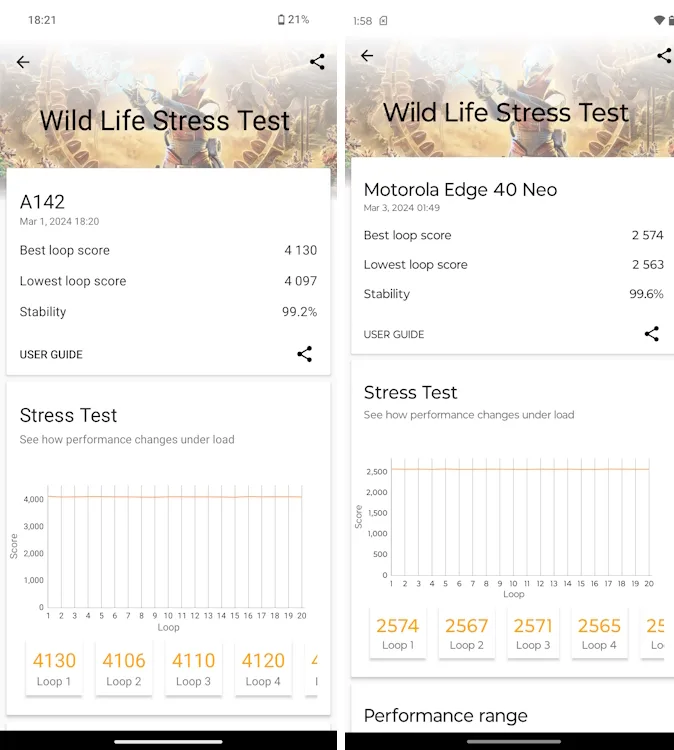
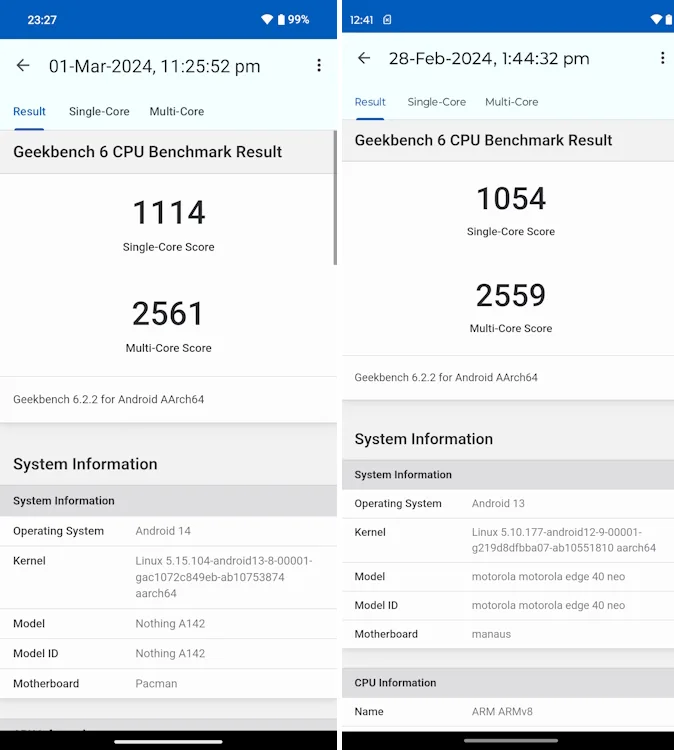
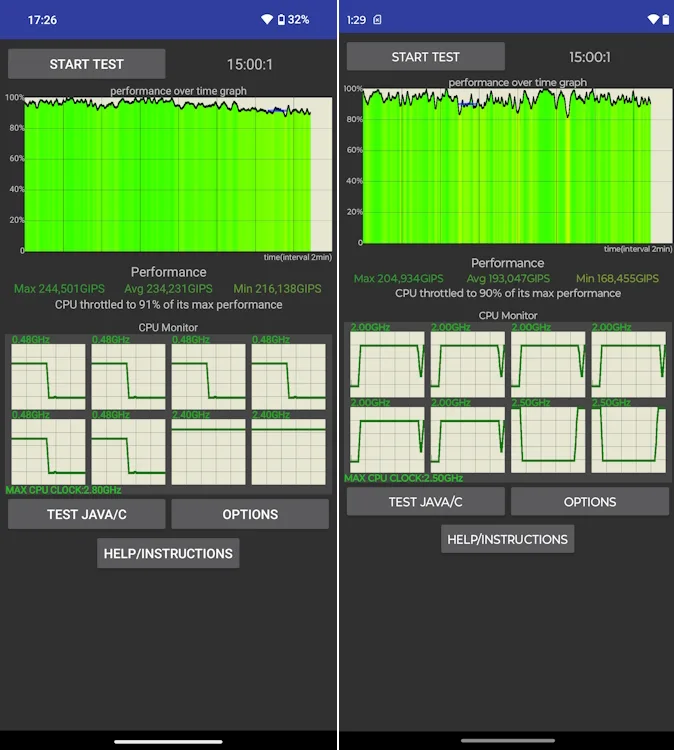

0 Comments